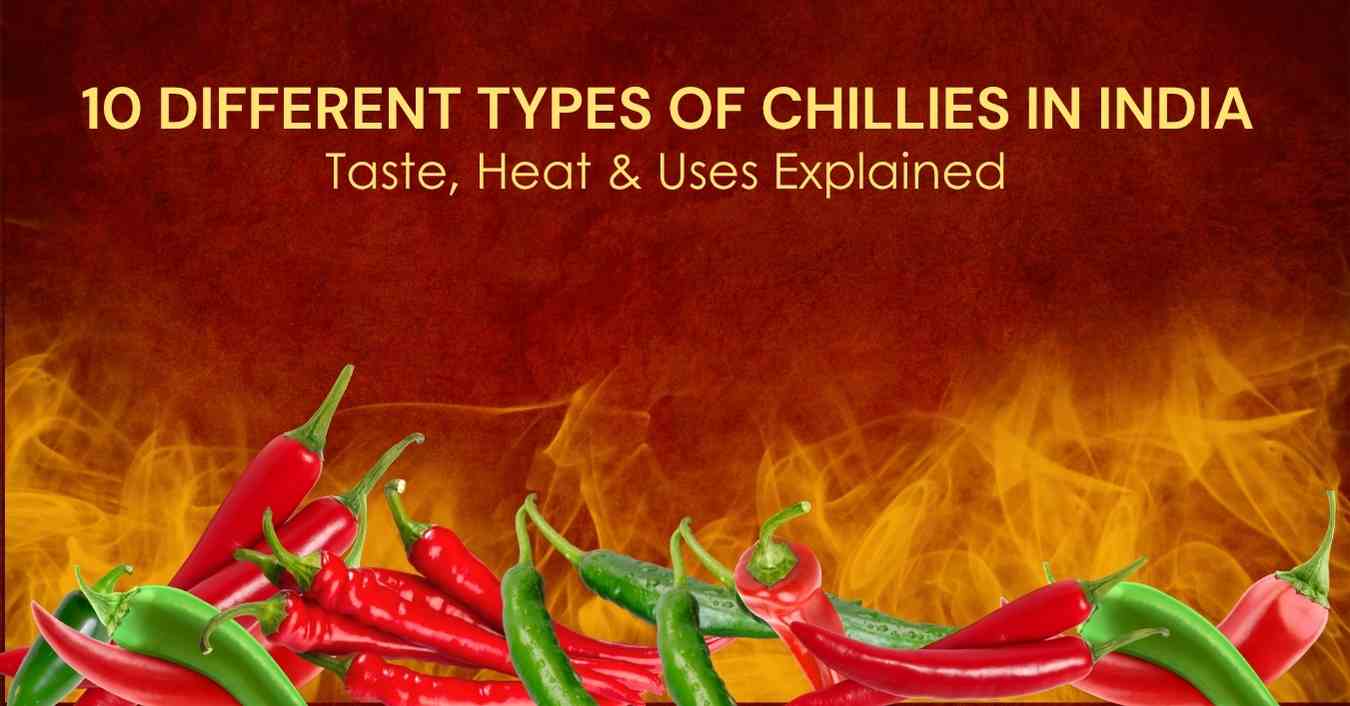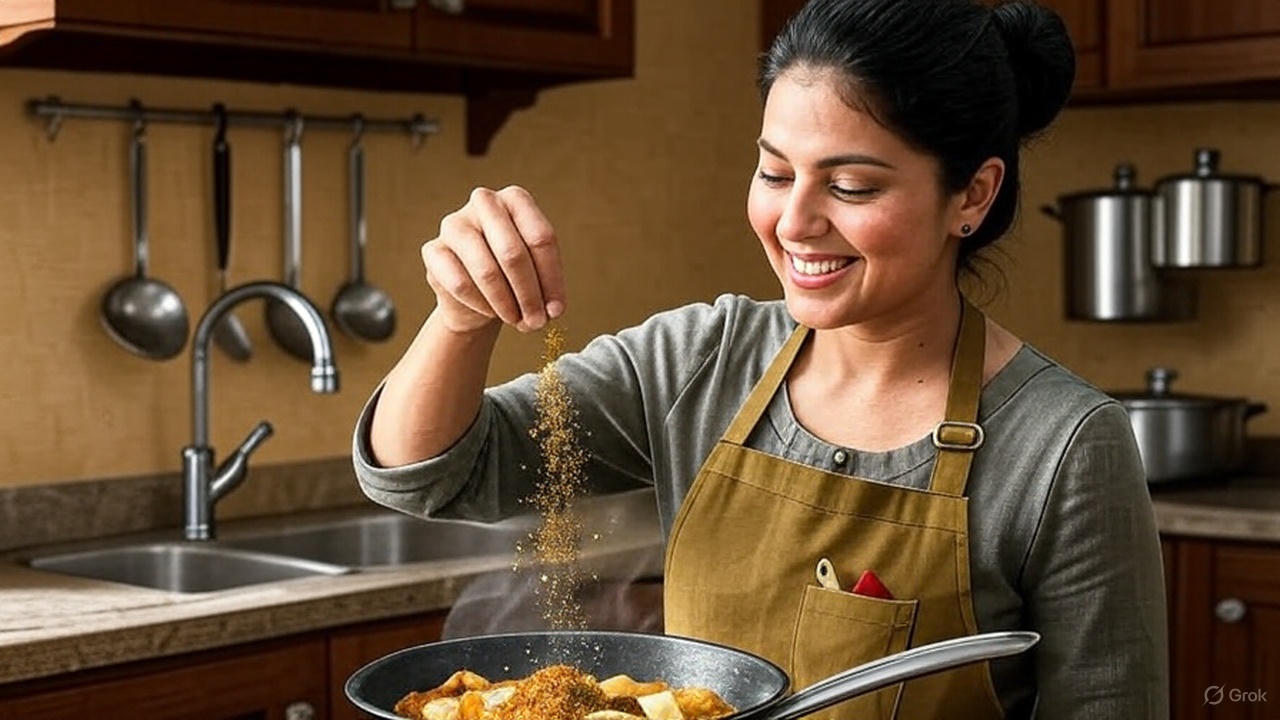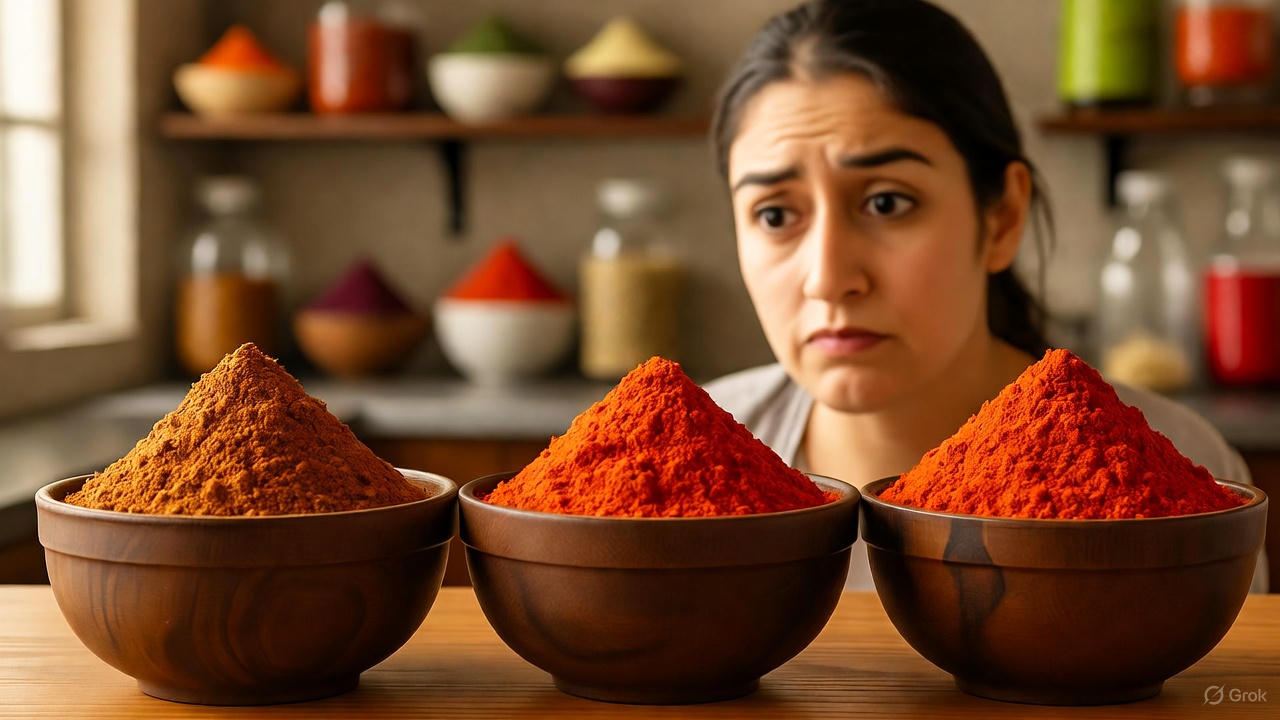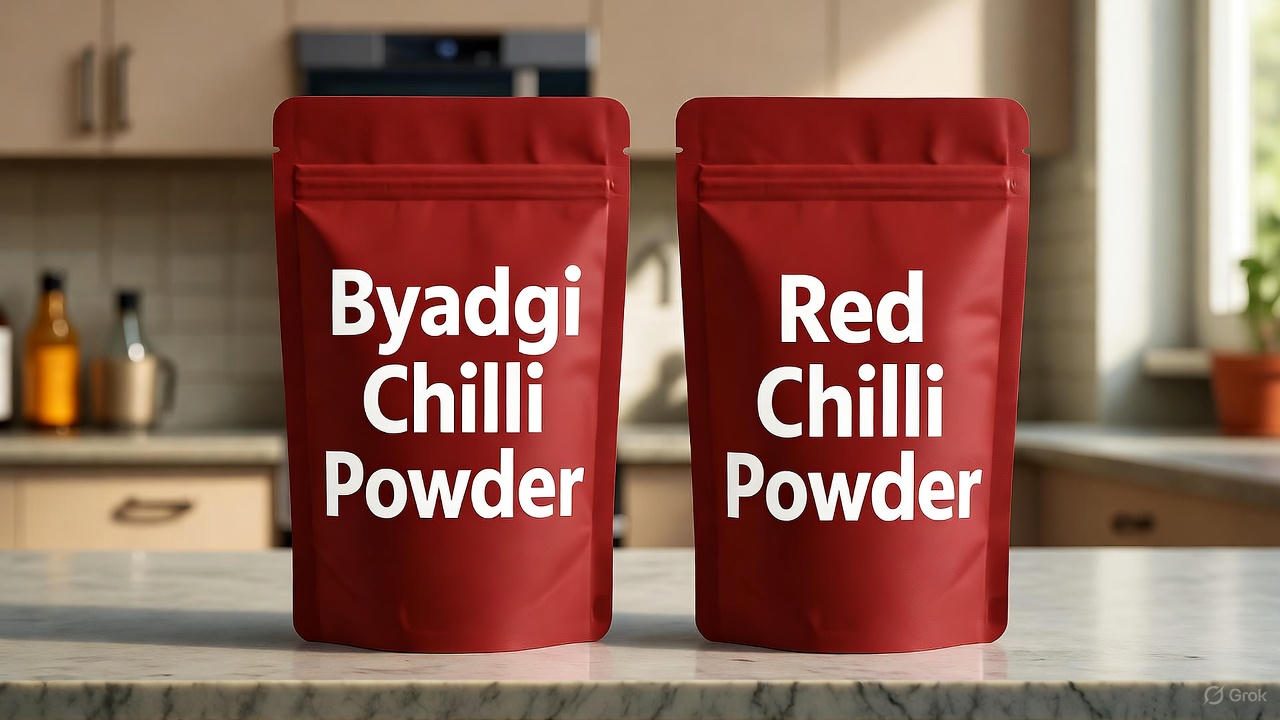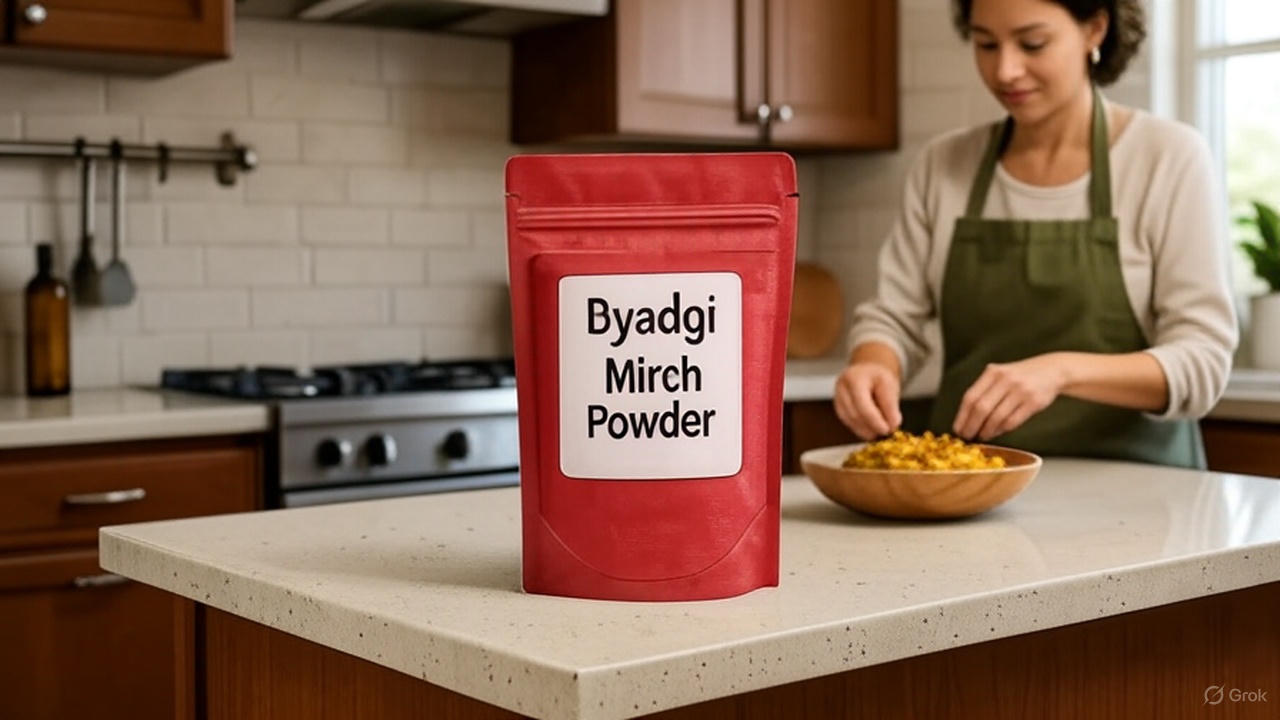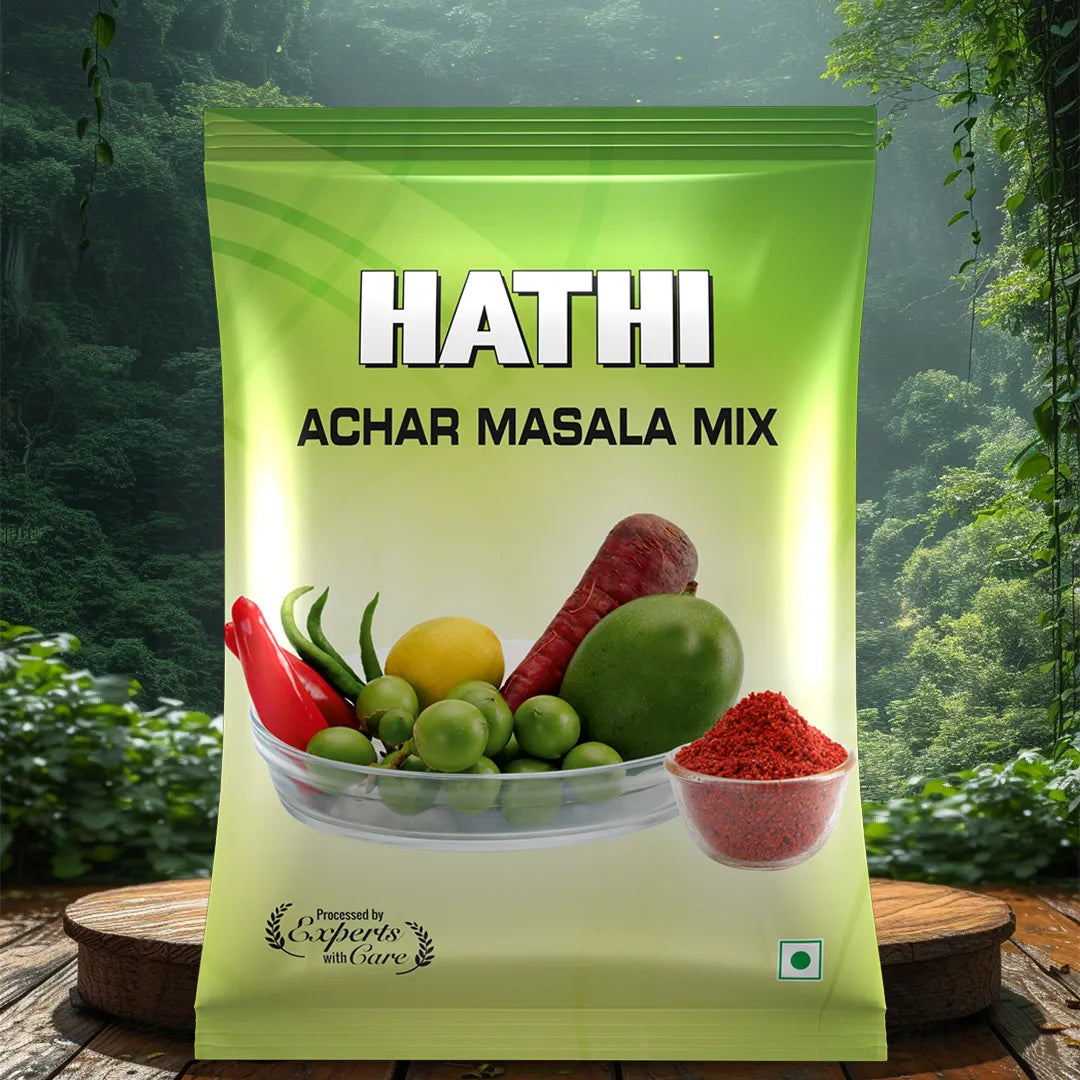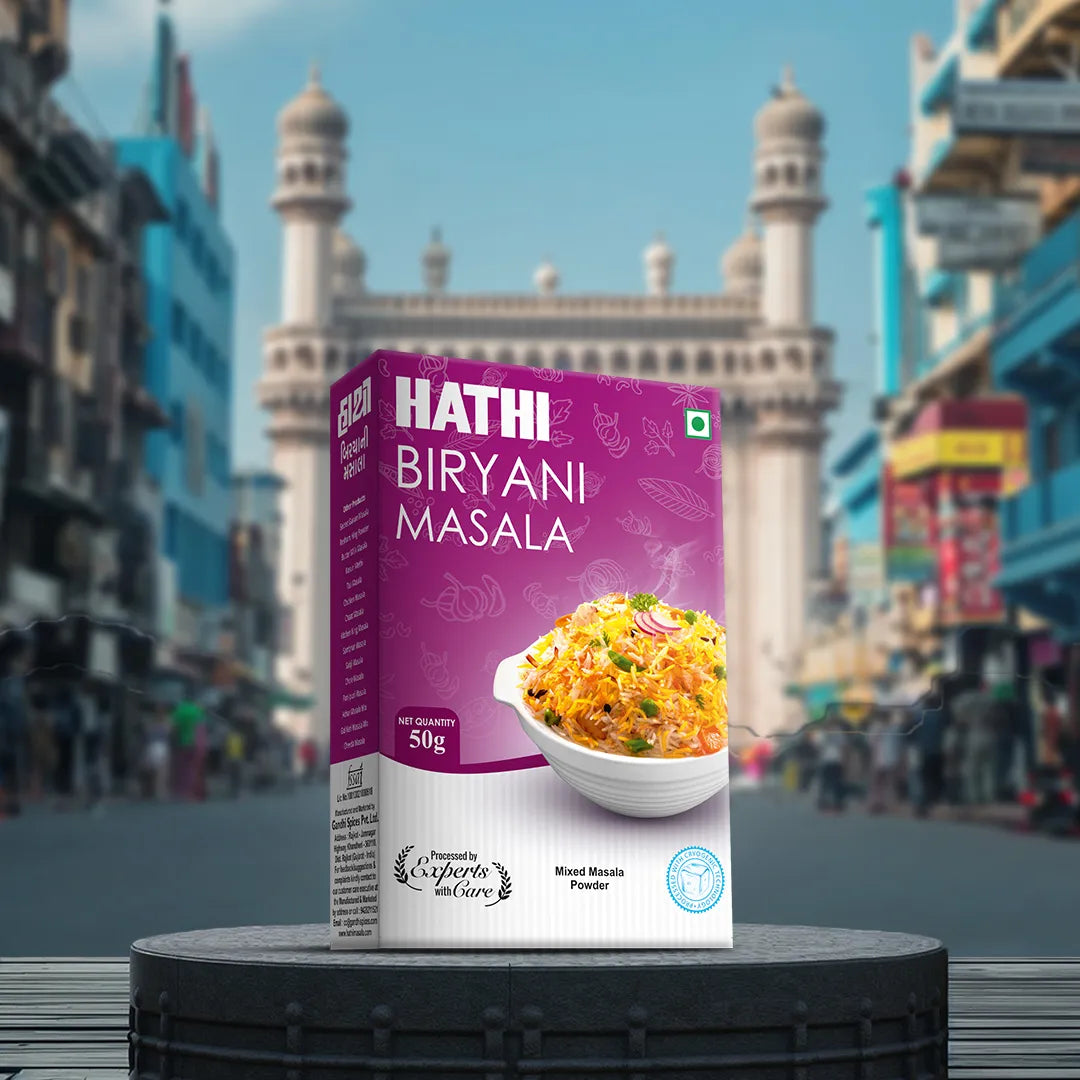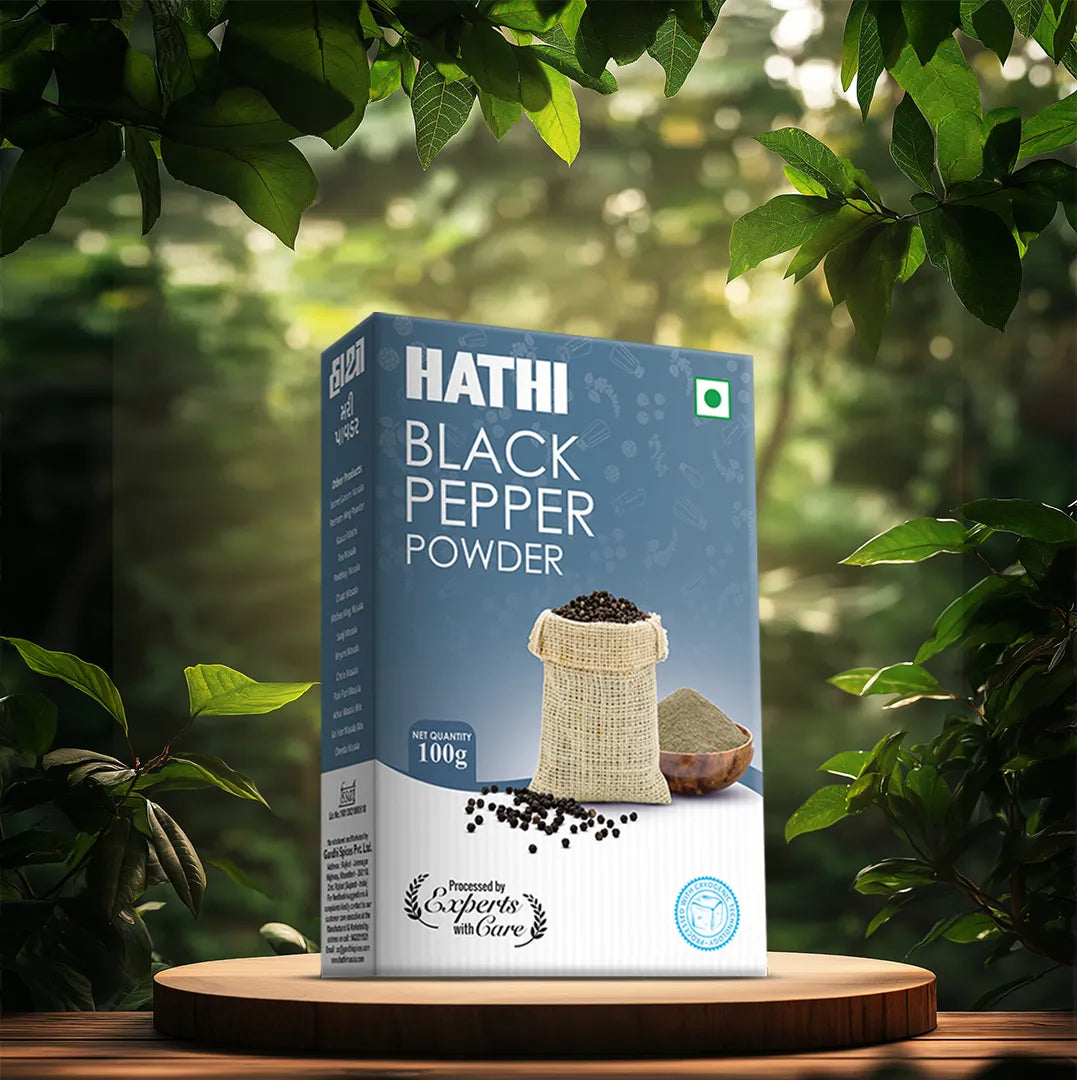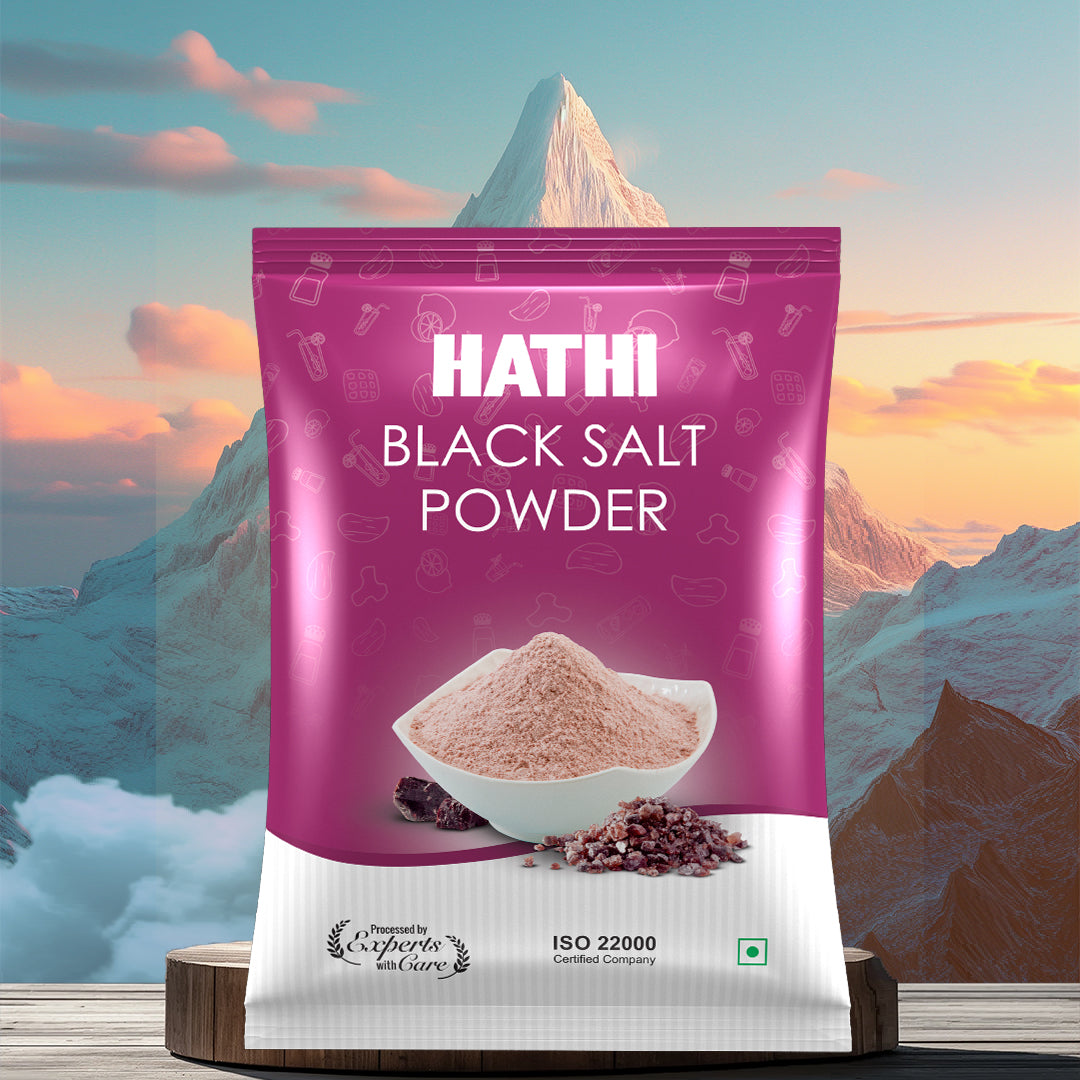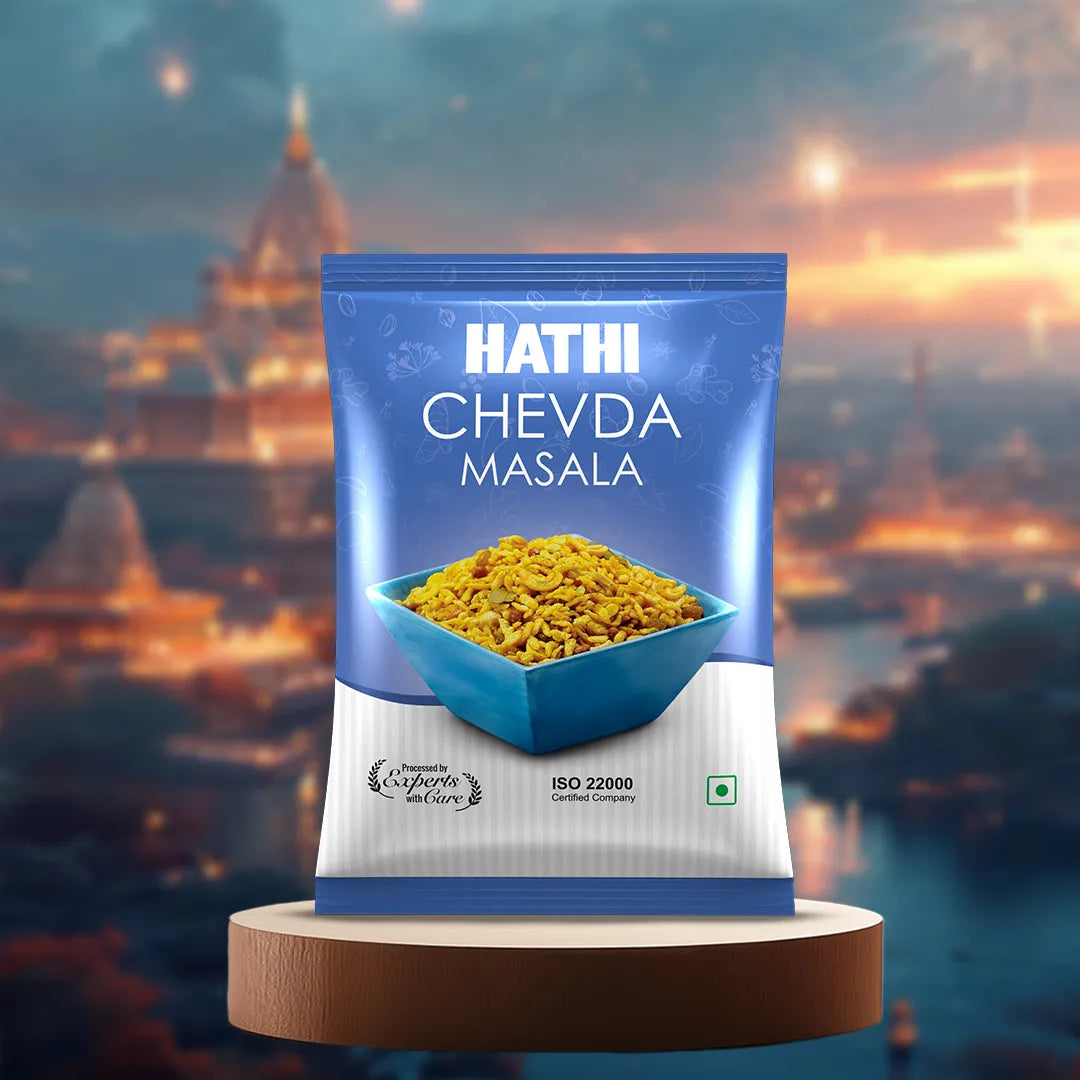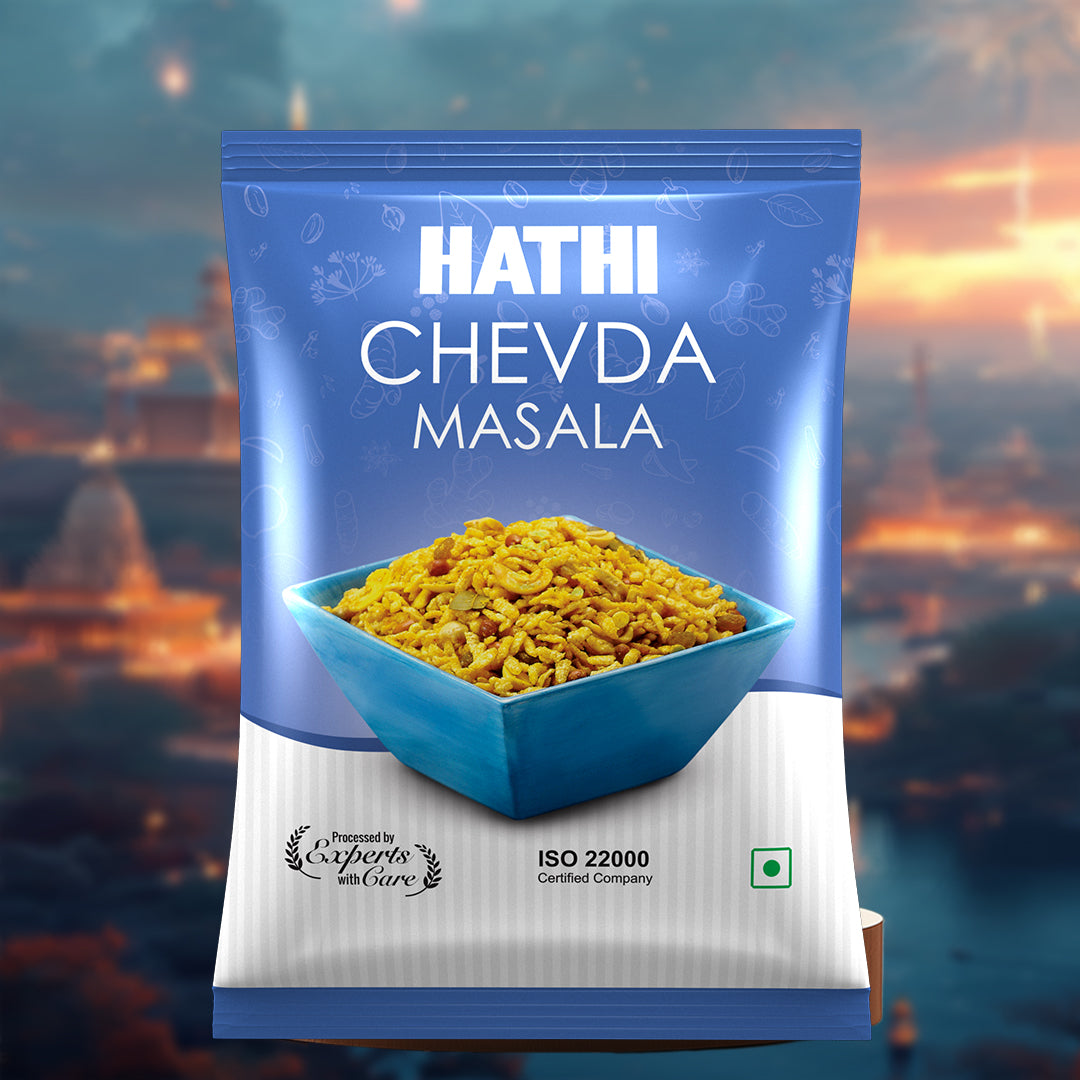Chillies lend a significant range of flavour and character to the diverse Indian culinary landscape, from flavour to colouration to spiciness. The various types of chillies grown and consumed in India contribute to regional cuisines; Indian chillies are known around the world for their spiciness, flavour, and aroma. India is among the world's largest consumers of chillies and is the largest producer and exporter of chillies in the world.
Let us look at the 10 most famous types of chillies in India, each with its distinctive colour, pungency, and usage in Indian cooking.
1. Kashmiri Chilli (Kashmir)
Characteristics:
- Colour: Deep red
- Heat Level: Mild
- Best For: Adding vibrant colour without overwhelming heat
Details:
The most notable features of Kashmiri chillies are their bright red colour and mild heat level. Kashmiri chillies are grown in the Kashmir valley, and they are often ground down into fine powders in dishes like Rogan Josh, tandoori marinades, and rich gravies.
Pro Tip: Use Kashmiri chilli powder to get that restaurant-style red curry without the burn.
2. Guntur Chilli (Andhra Pradesh)
Characteristics:
- Colour: Bright red
- Heat Level: Very Hot
- Best For: Spicing up curries and chutneys
Details:
Guntur is located in Andhra Pradesh and is one of India's leading chilli-producing areas. This chilli is spicy and is commonly used in Andhra cuisine, which is traditionally rich and hot. Guntur chillies are also an important export product.
Did You Know? Guntur chillies are used to make the famous Andhra chilli pickle.
3. Byadgi Chilli (Karnataka)
Characteristics:
- Colour: Rich, deep red
- Heat Level: Mild to moderate
- Best For: Udupi cuisine, sambar, masala pastes
Details:
Byadgi chillies are long and wrinkled with a bit less heat than Guntur chillies. Their brilliance in colour and aroma has made them a favourite for traditional South Indian foods, particularly Udupi-style sambars and rasams.
4. Boria Chilli (Tamil Nadu)
Characteristics:
- Colour: Dark red
- Heat Level: Moderate
- Best For: Tempering, dals, and vegetable curries
Details:
Boria chillies are small, round chiles that look like berries. In South Indian preparations, they are well known as they are primarily used for tempering, but their size and not-too-hot flavour make these chiles a great way to add flavour without ruining a dish.
5. Sankeshwari Chilli (Maharashtra)
Characteristics:
- Colour: Rich red
- Heat Level: Very hot
- Best For: Maharashtrian masalas and coastal curries
Details:
Sankeshwari chillies farmed in the Kolhapur region have a really strong heat, used for Kolhapuri masala, a necessary spice blend used for many spicy dishes from Maharashtra.
6. Mathania Mirch (Rajasthan)
Characteristics:
- Colour: Bright red
- Heat Level: High
- Best For: Rajasthani laal maas and fiery gravies
Details:
Boria chillies come from the village of Mathania and are popular in Rajasthani food due to their deep taste and heat; it should be in every Rajasthani laal maas - the signature mutton dish of Rajasthan.
7. Bhut Jolokia (North East India)
Characteristics:
- Colour: Ranges from red to orange
- Heat Level: Extremely hot (Over 1,000,000 SHU)
- Best For: Pickles, chutneys, non-veg dishes
Details:
Alternatively known as "Ghost pepper", Bhut Jolokia was the hottest chilli in the world at one time. It is native to Assam, Nagaland and Manipur and is so hot that locals only use a pinch of it in fermented fish and spicy pickles.
WARNING: ALWAYS USE GLOVES WHEN HANDLING THIS CHILLI! Even a pinch of it will ignite your dish.
8. Jwala Chilli (Gujarat)
Characteristics:
- Colour: Light green (fresh), red (dried)
- Heat Level: Medium
- Best For: Everyday Indian cooking, snacks, and thecha
Details:
The long, pointy Jwala chilli, also known as finger hot pepper, is primarily grown in Gujarat. It is a common chilli among Gujaratis and is used in all the common preparations, naturally in a dish made with peanuts called 'farsan' or simply chutney.
9. Kanthari Chilli (Kerala & Tamil Nadu)
Characteristics:
- Colour: White to green
- Heat Level: Very hot
- Best For: South Indian seafood and meat dishes
Details:
Kanthari, often known as bird's eye chilli, is small and potent. This chilli is commonly grown in backyards throughout Kerala, and when prepared, it goes into spicy fish curries or pepper water.
10. Dhani Chilli (Manipur)
Characteristics:
- Colour: Bright red
- Heat Level: Very hot
- Best For: Pickles, chutneys, local tribal dishes
Details:
Dhani chillies are short, sharp, and aromatic chillies from the Northeast. With an intense pungent smell and spicy flavour, they are also used in local Manipuri recipes and homemade pickles.
Chillies: More Than Just Regular Spice
Chillies influence:
- The appearance of food (colour)
- The flavour profile
- The spice level based on Scoville Heat Units (SHU)
Storage Tip
To preserve the colour, flavour, and safety of dried chillies:
- Store in airtight containers
- Keep in a cool, dry place
- Protect from moisture and pests
Ensure there's no aflatoxin contamination (common in improperly stored chillies)
FAQs About Types of Chillies in India
What is the hottest chilli in India?
The hottest chilli is Bhut Jolokia (Ghost Pepper) or General's Chilli, with Scoville Heat Units greater than 1 million.
Which Indian chilli is best for colour?
Kashmiri and Byadgi chillies are prized mainly for their big, fat, vibrant colour and mild heat.
Can I substitute Kashmiri chilli for something else?
Yes, you can; Byadgi chilli is a brilliant substitute due to its similarity in colour and mildness.
Are all Indian chillies red?
Chillies like Jwala (green when fresh) and Kanthari (white to green) are not red.
Are Indian chillies useful for international dishes?
Yes, Indian chillies can give food an authentic spice, heat and colour, not only Indian dishes but also Mexican, Thai, and Chinese.
Conclusion
India has a plethora of different types of chillies, representing the vastness of culinary traditions. If you like spicy curries, colourful gravies, or hot pickles, there will certainly be an Indian chilli that meets your demands.
So next time you go and buy spices, don't just apply generic chilli powder, but look at our exciting world of Indian chillies. Your taste buds will love you for it!

